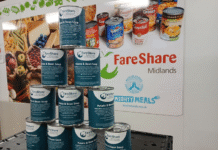
Yogurt’s role as a healthy, tasty, and natural part of the diet has seen volume and value sales grow consistently in recent years. According to a new report from Innova Market Insights, last year, it was expected that the global market value of dairy and non-dairy yogurt would exceed US$ 100 billion for the first time.
On average, 57% of consumers worldwide regularly buy yogurt, although individual country rates vary from 32% in Indonesia to 78% in Spain. Furthermore, 29% of consumers increased their consumption in 2020, largely for health reasons, while 60% said their consumption levels were stable, and just 11% said they had decreased.
Asia is the largest market with 43% of yogurt value sales. It is also seeing the most growth. The region is home to the top two individual countries in terms of value, with China a clear leader and Japan taking second place ahead of Brazil and the US.
Rising demand for yogurt
The rising popularity of non-dairy yogurt has a considerable impact on the category, with 25% of consumers globally now eating plant-based spoonable yogurt and 22% enjoying plant-based drinking yogurt. Perhaps unsurprisingly, spoonable non-dairy yogurt is the most active sub-category in terms of innovation, seeing new product launch activity grow by 9.6% (five-year CAGR to the end of Q3 2021). This compares with just 0.2% for the its category as a whole.
Key themes driving innovation are largely the same for dairy and non-dairy, but each tends to create its own path. There is a strong focus on highlighting organic status, sourcing, clean label, and provenance. Animal welfare issues are increasingly important in dairy and sustainability under the spotlight for non-dairy alternatives.
Health is a driving factor, particularly added wellbeing attributes such as probiotics, immune support, and digestive benefits. Protein and fiber content remains important, along with sugar and fat reduction and free-from formulations, while research also indicates that consumers would be prepared to pay more for added health benefits. With 20% of consumers in Innova’s survey being influenced by ‘made with real ingredients’ and ‘natural’ claims when buying yogurt, simple and clear ingredient lists will continue to be an area of focus.
Other potentially rewarding directions for new products exist in the sensory arena by developing new flavor combinations and improved texture/mouthfeel, particularly for low, light, and non-dairy options. While fruit flavors dominate global product launches, and more complex confectionery and dessert-style offerings are also increasingly popular, there is growing activity in vegetable flavors.
This trend is moving beyond Asia, where vegetable and savory tastes in traditionally sweeter food categories are already well established. Vegetables such as beetroot and carrot are widely used for coloring in yogurt preparations, but they are now being increasingly selected as main flavors along with a raft of more locally and regionally-sourced produce and ingredients.
IndiFoodBev — authentic, impactful and influential
An English-language food and beverage processing and packaging industry B2B platform in print and web, IndiFoodBev is in its third year of publication. It is said that the Indian food and beverage industries represent approximately US$ 900 billion in revenues which implies more than 20% of the country’s GDP. Eliminating the wastage on the farmside can help to deliver more protein to a higher number of the population apart from generating sizable exports. The savings in soil, seeds, water, fertilizer, energy and ultimately food and nutrition could be the most immense contribution that country is poised to make to the moderation of climate change.
To improve your marketing and grow sales to the food and beverage processing and packaging industry, talk to us. Our research and consulting company IppStar [www.ippstar.org] can assess your potential and addressable markets in light of the competition. We can discuss marketing, communication, and sales strategies for market entry and growth.
Suppliers and service providers with a strategy and budget for targeted marketing can discuss using our hybrid print, web, video, and social media channels to create brand recognition linked to market relevance. Our technical writers are ready to meet you and your customers for content.
The second largest producer of fruit and vegetables in the world is continuously expanding processing capacities and delivery systems with appropriate innovative technologies. We cover product and consumer trends, nutrition, processing, research, equipment and packaging from farm to thali. Get our 2025 media kit and recalibrate your role in this dynamic market. Enhance your visibility and relevance to existing markets and turn potential customers into conversations. Ask for a sample copy of our bi-monthly in print or our weekly IndiFoodBev eZine each Wednesday.
For editorial info@ippgroup.in — for advertisement ads1@ippgroup.in and for subscriptions subscription@ippgroup.in
Naresh Khanna – 10 February 2025
Subscribe Now










